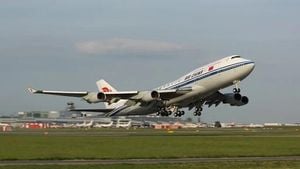Honda is gearing up to resume its regular production schedule after a turbulent period marked by chip shortages caused by the ongoing Nexperia dispute, a move that could signal the first signs of stabilization in an industry rocked by geopolitical tensions and supply chain disruptions. According to Reuters, the Japanese automaker had been forced to halt some manufacturing operations, most notably at its Mexico plant on October 28, 2025, and to adjust output at factories in the United States and Canada. The root of the problem: a ban by China on exports from the Dutch-owned chipmaker Nexperia, which sent shockwaves through the global auto sector.
Honda’s tentative plan is to get these facilities back to full operation during the week of November 24 to November 30, 2025. However, a spokesperson for the company cautioned that these plans could change if the situation shifts, underscoring the fragility of the current recovery. This move is being closely watched by industry analysts and competitors alike, as it suggests that at least the immediate chip crunch from the Nexperia dispute may be easing, potentially helping to avoid a deeper hit to car inventories and prices.
But the story doesn’t end there. Industry sources cited in multiple reports warn that Nexperia’s wafer supply could run out by mid-December 2025. The company is scrambling to find alternative suppliers, while its customers are adopting creative, if temporary, measures to keep production lines running. One workaround involves sourcing wafers from Nexperia’s Hamburg facility, shipping them separately to China, and using the Dongguan site for final packaging. It’s a logistical dance that highlights just how vulnerable the global auto industry remains to supply chain shocks.
The impact of the wafer shortage is being felt far beyond Honda. Nissan, for example, is expected to cut output by 1,400 vehicles at its Kyushu plant, following an earlier reduction of 900 units. Production plans at other Nissan sites are still under review, reflecting the uncertainty that continues to hang over the sector. Meanwhile, manufacturers across the board are exploring options with rival chipmakers such as Onsemi and STMicroelectronics to secure the components they need.
The ripple effects extend to major suppliers as well. German auto-parts giant Bosch has confirmed ongoing disruptions at three of its factories—Ansbach, Salzgitter, and Braga—which collectively affect thousands of workers. Bosch is relying on state-backed furlough schemes to support 300 to 400 employees at Salzgitter and around 650 at Ansbach, while approximately 2,500 of the 3,300 staff at its Braga site are facing temporary working-time reductions or furloughs. It’s a stark reminder of how a single link in the supply chain can impact livelihoods across continents.
Volkswagen, for its part, appears to be weathering the storm—at least for now. Brand chief Thomas Schaefer told reporters that the company has secured sufficient supplies and remains “secure at present.” Still, the company, like its competitors, is not taking anything for granted, as the broader industry continues to grapple with the fallout from the Nexperia dispute.
So, what exactly sparked this crisis? The trouble began when China imposed a ban on exports from Nexperia, a Dutch-owned semiconductor manufacturer with key facilities in Europe and China. The ban was part of a broader tug-of-war over technological supremacy and supply chain control, and it quickly exposed just how dependent global automakers are on a handful of critical chip suppliers. According to Reuters, Honda and other carmakers were forced to secure chips from alternative sources, accelerating an industry-wide push to reduce reliance on China for critical auto parts.
This shift is not limited to Honda. General Motors, for example, has ramped up its supplier directive aimed at eliminating dependence on auto parts and components made in China. The Nexperia dispute, while disruptive, is serving as a wake-up call for the entire industry, prompting companies to diversify their chip and parts suppliers and to explore new manufacturing partnerships outside of China.
Nexperia itself is taking steps to reduce future risks. The company’s European operations plan to expand packaging capacity in Malaysia and the Philippines, a move designed to provide alternative pathways for chip production and to insulate the company—and its customers—from future geopolitical flare-ups. As for the immediate crisis, Nexperia is actively seeking alternative suppliers and working to keep its existing customers supplied through creative logistics, such as the Hamburg-to-Dongguan wafer shipments.
Meanwhile, the broader sector is anxiously watching diplomatic efforts to resolve the dispute. A Dutch government delegation is scheduled to visit China for talks aimed at easing tensions and stabilizing supply chains. Many companies are pinning their hopes on these discussions, hoping for a breakthrough that can bring some much-needed predictability back to the market.
But even as Honda prepares to restart production, the episode has laid bare the fragility of the global automotive supply chain. The Nexperia dispute is just the latest in a series of shocks—from the COVID-19 pandemic to the 2021 global chip shortage—that have forced automakers to rethink how and where they source their most critical components. As one industry observer put it, “This isn’t just about chips. It’s about the future of the entire automotive industry.”
For workers on the ground, the uncertainty is palpable. At Bosch’s factories in Europe, thousands of employees face reduced hours or temporary layoffs, with many wondering when—or if—full production will resume. At Nissan’s Kyushu plant, the latest round of output cuts has left workers bracing for further disruptions. And at Honda, the hope is that the planned resumption of production will hold, but no one is making any guarantees.
Industry insiders say the lessons of the Nexperia dispute are already being absorbed. Automakers are moving quickly to diversify their supplier base, invest in new manufacturing capacity, and build greater resilience into their supply chains. At the same time, governments are being drawn into the fray, with the Dutch delegation’s upcoming visit to China seen as a test of whether diplomatic engagement can help defuse tensions and prevent future crises.
For now, Honda’s move to restart production stands as an early sign that the latest chip shock may be stabilizing—at least temporarily. But as the Nexperia dispute makes clear, the global auto industry remains on edge, acutely aware that the next supply chain crisis could be just around the corner.




